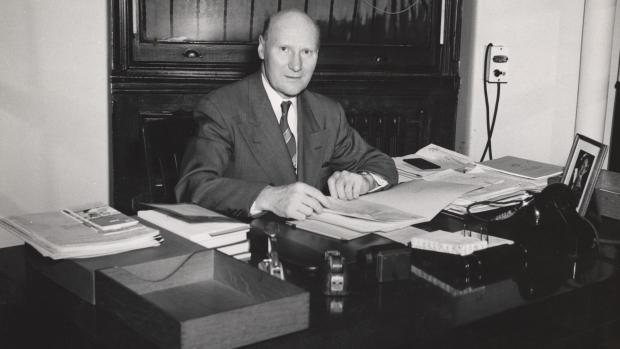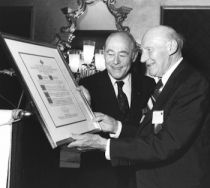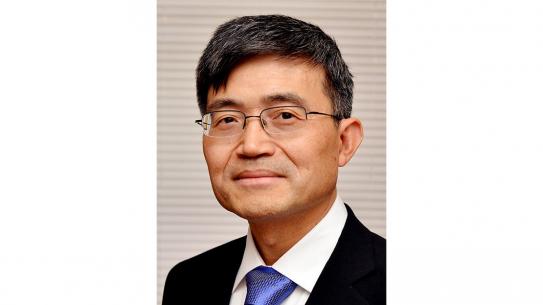From Microwaves to Millimeter Waves
Bern Dibner Library Celebrates Tandon’s Long Tenure as a Leader in Wireless Communications

Professor Ernst Weber
As home to NYU WIRELESS, a leader in 5G research, Tandon is at the forefront of ushering in a new generation of wireless communication. The well-respected academic research center was founded by Professor Theodore “Ted” Rappaport, a seminal figure who was at the vanguard of proving that the millimeter wave (mmWave) spectrum had the power to transform the entire industry.
Those not familiar with the history of the school, however, might not realize that it has long been at the frontier of wireless (which refers to any communication that uses electromagnetic or acoustic waves as a medium, rather than a wire connection) and that decades before Rappaport came another towering figure: Ernst Weber.
Bern Dibner Library is currently hosting an exhibit tracing the trajectory from Weber’s early research on microwaves to the work now being done at NYU WIRELESS with millimeter waves.
Weber presided over what was then known as the Polytechnic Institute of Brooklyn, from 1957, when President Harry Rogers suddenly died and he was asked to step in, to 1969. It was on the day of Weber’s official inauguration as president of the Institute that Poly, as it was affectionately called, dedicated its new facility at 333 Jay Street — a building that had once housed the American Safety Razor Corporation.
A section of Bern DibnerLibrary's new display, "From Ernst Weber to 5G: Wireless Technology at NYU and Poly"
The years of Weber’s presidency have been widely characterized as a time of unprecedented growth and intellectual achievement. Weber, as a New York Times reporter once wrote, helped turn the school “into one of the nation's foremost science-engineering centers” and “by the end of his tenure, the institute's enhanced status was nationally recognized.”
Born on September 6, 1901 in Vienna, Weber was a noted authority on microwave techniques, and his work on the calibration of radar systems was vital to U.S. efforts in World War II. He founded the school’s highly regarded Microwave Research Institute in 1945, and it ultimately grew into the country’s foremost centers of electronic research.
Weber had first come to the school as a visiting professor of electrical engineering in 1930, leaving Germany where he was then living, as clashes between the National Socialists and the Communists made life uncomfortable for those who did not subscribe to either ideology.
He was gratified the following year when he was named a permanent research professor and placed in charge of graduate studies. Recognizing that few students could afford to pursue a graduate education full-time, Weber expanded the school’s evening offerings, and the program prospered; by the late 1950s almost 40% of the aspiring engineers enrolled were electrical engineering majors.
Weber, the recipient of a Presidential Certificate of Honor and the National Medal of Science, left the school in 1969 to chair the engineering division of the National Research Council.

Weber (right) receiving an IEEE award
Aside from leaving the School of Engineering with an enhanced global reputation and stellar academic status, Weber left it on solid financial footing. The Polytechnic Research and Development (PRD) Company, which he had launched to produce and sell the durable precision attenuators he had developed, provided Poly with its first substantial endowment.
Weber, who was the first president of the Institute of Electrical and Electronic Engineers (IEEE), died on February 15, 1996.
He was said to be exceptionally fond of a quote by academician J. Douglas Brown that still informs the School of Engineering ethos: “The engineer must be cognizant of the needs and aspirations of mankind while interpreting and implementing the knowledge science has discovered. The professional engineer must ... be a bridge between the two worlds of science and humane values.”




